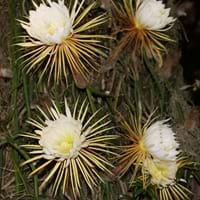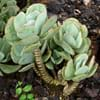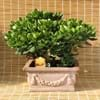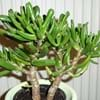Life Span
Perennial
Perennial
Type
Cactus, Flowering Plants
Bulb or Corm or Tuber
Origin
South America, Argentina, Brazil
Hybrid origin
Types
Not available
boissieri , cupanii , hungaricum , kesselringii
Number of Varieties
Not Available
Habitat
Dry Forest, limestone outcrops, Subtropical climates
Temperate Regions
USDA Hardiness Zone
10-14
Not Available
AHS Heat Zone
12-10
Not Available
Sunset Zone
H2, 13, 16, 17, 21, 22, 23, 24
21,22
Habit
Upright/Erect
Clump-Forming
Flower Color
White, Light Green
Purple, Violet
Flower Color Modifier
Bicolor
Bicolor
Fruit Color
Orange, Pink, White, Yellow
Not Available
Leaf Color in Spring
Not Available
Green
Leaf Color in Summer
Not Available
Light Green
Leaf Color in Fall
Not Available
Several shades of Green
Leaf Color in Winter
Not Available
Light Green
Leaf Shape
Not Available
Long Linear
Plant Season
Spring, Summer, Fall, Winter
Spring, Fall
Sunlight
Full Sun
Full Sun, Partial Sun
Type of Soil
Loam, Sand
Loam
The pH of Soil
Acidic, Neutral, Alkaline
Acidic, Neutral
Soil Drainage
Well drained
Well drained
Bloom Time
Late Spring, Early Summer
Late Summer, Early Fall
Tolerances
Drought, Salt
Drought
Where to Plant?
Container, Ground
Ground
How to Plant?
Cuttings
Divison, From bulbs, Seedlings
Plant Maintenance
Medium
Medium
Watering Requirements
Average Water Needs, Distilled Water, Needs good drainage
Keep ground moist
In Summer
Lots of watering
Lots of watering
In Spring
Moderate
Moderate
In Winter
Average Water
Average Water
Soil pH
Acidic, Neutral, Alkaline
Acidic, Neutral
Soil Type
Loam, Sand
Loam
Soil Drainage Capacity
Well drained
Well drained
Sun Exposure
Full Sun
Full Sun, Partial Sun
Pruning
Remove damaged leaves, Remove dead branches, Remove dead leaves
no pruning required
Fertilizers
All-Purpose Liquid Fertilizer
All-Purpose Liquid Fertilizer
Pests and Diseases
Bacterial Stem Rot, Mealy bugs, Red spider mite, Scale
Dry root rot, Pest Free
Plant Tolerance
Drought
Drought
Flower Petal Number
Semi-Double
Single
Foliage Texture
Bold
Coarse
Foliage Sheen
Not Available
Glossy
Attracts
Birds, Spider Mites
Whiteflies
Allergy
Avoid during Pregnancy, hallucinations
Poisonous to grazing animals
Aesthetic Uses
Showy Purposes
along a porch, deck or patio, Borders, Mixed Border, small hedge
Beauty Benefits
Not Available
No Beauty Benefits
Environmental Uses
Air purification
Air purification
Medicinal Uses
Antidiabetic, Rheumatism, Soothing and relieving pain
anti rheumatic, cathartic
Part of Plant Used
Flowers, Leaves
Root
Other Uses
Traditional medicine, Used for its medicinal properties, Used in herbal medicines
Showy Purposes
Used As Indoor Plant
Yes
No
Used As Outdoor Plant
Yes
Yes
Garden Design
Container, Edible, Hedges, Houseplant, Rock Garden, Wall, Tropical
Container, Cutflower, Foundation, Lawns and Turf, Mixed Border
Botanical Name
Selenicereus grandiflorus
COLCHICUM 'Lilac Wonder'
Common Name
Queen of the night, large-flowered cactus, sweet-scented cactus, vanilla cactus
Hybrid Autumn Crocus, Hybrid Meadow Saffron
In Hindi
रात की रानी
meadow saffron
In German
Königin der Nacht
Herbstzeitlose
In French
Reine de la nuit
Colchique d'automne
In Spanish
Reina de la noche
Estado de conservación
In Greek
Βασίλισσα της νύχτας
meadow saffron
In Portuguese
Rainha da noite
Colchicum autumnale
In Polish
Królowa nocy
Colchicum autumnale
In Latin
Domina noctis
autumnale
Phylum
Magnoliophyta
Tracheophyta
Class
Magnoliopsida
Magnoliopsida
Order
Caryophyllales
Liliales
Family
Cactaceae
Liliaceae
Genus
Selenicereus
Colchicum
Clade
Angiosperms, Core eudicots, Eudicots
Angiosperms, Monocots
Tribe
Hylocereeae
Not Available
Subfamily
Cactoideae
Not Available
Number of Species
Not Available
Season and Care of Queen of the Night and Meadow Saffron
Season and care of Queen of the Night and Meadow Saffron is important to know. While considering everything about Queen of the Night and Meadow Saffron Care, growing season is an essential factor. Queen of the Night season is Spring, Summer, Fall and Winter and Meadow Saffron season is Spring, Summer, Fall and Winter. The type of soil for Queen of the Night is Loam, Sand and for Meadow Saffron is Loam while the PH of soil for Queen of the Night is Acidic, Neutral, Alkaline and for Meadow Saffron is Acidic, Neutral.
Queen of the Night and Meadow Saffron Physical Information
Queen of the Night and Meadow Saffron physical information is very important for comparison. Queen of the Night height is 300.00 cm and width 90.00 cm whereas Meadow Saffron height is 12.70 cm and width 20.30 cm. The color specification of Queen of the Night and Meadow Saffron are as follows:
Queen of the Night flower color: White and Light Green
Queen of the Night leaf color: Not Available
Meadow Saffron flower color: Purple and Violet
- Meadow Saffron leaf color: Green
Care of Queen of the Night and Meadow Saffron
Care of Queen of the Night and Meadow Saffron include pruning, fertilizers, watering etc. Queen of the Night pruning is done Remove damaged leaves, Remove dead branches and Remove dead leaves and Meadow Saffron pruning is done no pruning required. In summer Queen of the Night needs Lots of watering and in winter, it needs Average Water. Whereas, in summer Meadow Saffron needs Lots of watering and in winter, it needs Average Water.





